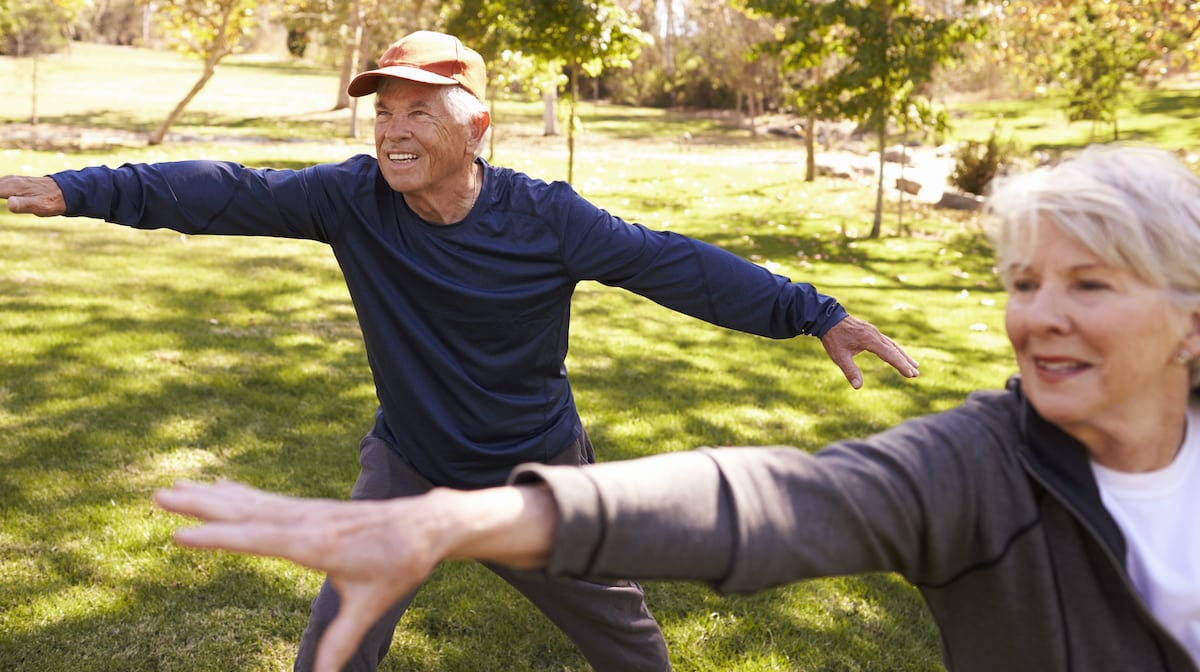If you're like most active older adults, you may have made some New Year’s resolutions…

Beginniner’s Guide to Tai Chi for Active Older Adults
Exercise is essential to a healthy mind and body, and one type of exercise — Tai Chi — is one that almost everyone can do and enjoy. Tai Chi is a combination of meditation and exercise that can gently soothe stress while keeping muscles in shape and flexible. It is especially great for active older adults who cannot participate in more strenuous forms of exercise, but has something to offer even those who work out regularly. Take a look at Tai Chi and find out if it can help you reach your mental and physical wellness goals.
What is Tai Chi?
According to the Tai Chi for Health Institute, Tai Chi is an ancient Chinese art with many styles that all share essential principles.
“The essential principles include mind integrated with the body; control of movements and breathing; generating internal energy, mindfulness, song (loosening 松) and jing (serenity 静). The ultimate purpose of tai chi is (to) cultivate the qi or life energy within us to flow smoothly and powerfully throughout the body.”
Also called Tai Chi Chuan, Tai Chi is unlike typical exercise in that it places emphasis on gentle, slow movements rather than fast, forceful movements (although there are exceptions to this in styles that are more oriented to the martial arts). While it may seem such movement cannot possibly achieve what a workout can, a study published in 2016 found Tai Chi has significant benefits and few adverse effects. Learn more about what Tai Chi has to offer toward physical wellness in the Harvard Health Publishing article, “The health benefits of tai chi.”
The basic moves of Tai Chi
A Tai Chi session generally begins with warm-up movements and deep breathing like gentle head rolls, toe touches, shoulder rolls, and hip rolls (think hula hoop!). This YouTube video is helpful to understand different warm-up techniques.
For beginners, Tai Chi moves can vary but are mainly performed, slowly and fluidly. For many, this will take getting used to since so much of what we do in everyday life seems to require speed and force to accomplish. In Tai Chi the “forms” are the combined movements or postures that are linked to transition into a chain of sequential moves. Tai Chi also has five different styles:
- Yang Style – Likely the most popular today, it was developed by Yang Luchan who lived from 1799-1872. It focuses on large, slow, gentle movements.
- Chen Style – Thought to have originated in the 17th century with the Chen clan in Henan province of China, it is the oldest style and centers on alternating slow and fast with jumping and is relative to the martial art of Tai Chi.
- Wu/Hao Style – Created by Wu Yuxiang in the 1800s who trained in both Yang and Chen styles, it emphasizes slow, smooth movements with erect posture.
- Wu Style – It is the second most popular style worldwide, and was develop by Wu Ch’uan-yu in the late 1800s. It is distinguished by its hand forms, pushing hands and training with weapons.
- Sun Style – The smoothest and least rigorous, this style is also the newest of the five and was created by Sun Lutang near the beginning of the 20th
Today, Tai Chi can be any one of or a mixture of these styles depending upon who is teaching or leading. To get a look at first steps to learning Tai Chi, the curejoy.com blog, “Tai Chi Moves for Beginners: 7 Basic Steps,” makes it simple to follow. For those who prefer to watch a video, there are many to choose from on YouTube, starting at the beginning and moving up in difficulty as you advance your goals.
Where else to go for Tai Chi
Tai Chi is becoming popular everywhere to the point that many gyms, yoga studios and palates studios offer Tai Chi in addition to their usual options. Many senior living communities also provide tai chi classes, as do community colleges and universities like Harvard and the University of Cincinnati. There are also websites dedicated to teaching tai chi as well. Among these are:
For specific variations of Tai Chi, the verywellfit.com blog, “Best Online Tai Chi Classes,” is another good resource.
StoneBridge at Winton Woods embraces all forms of healthy living and works to help each resident love their life and live it to the fullest. Contact us today to learn more about what we have to offer.


